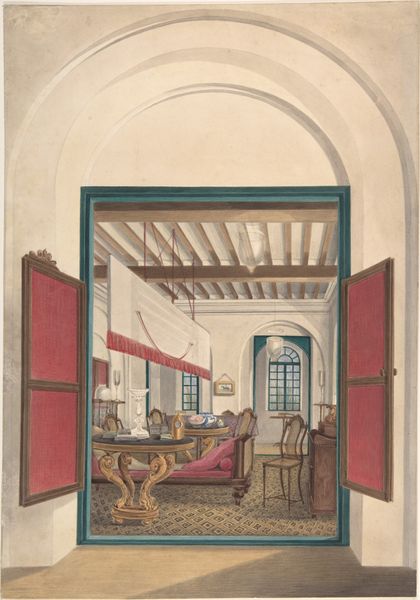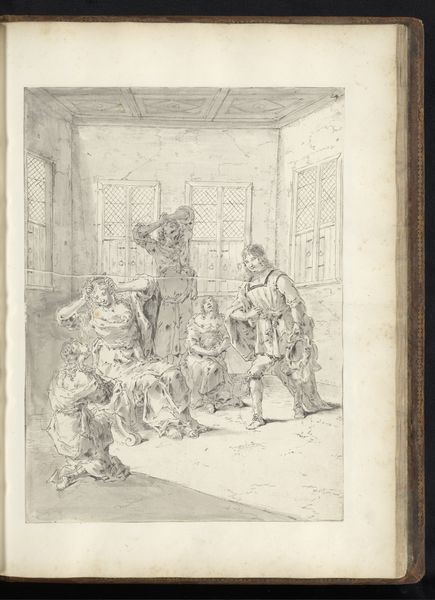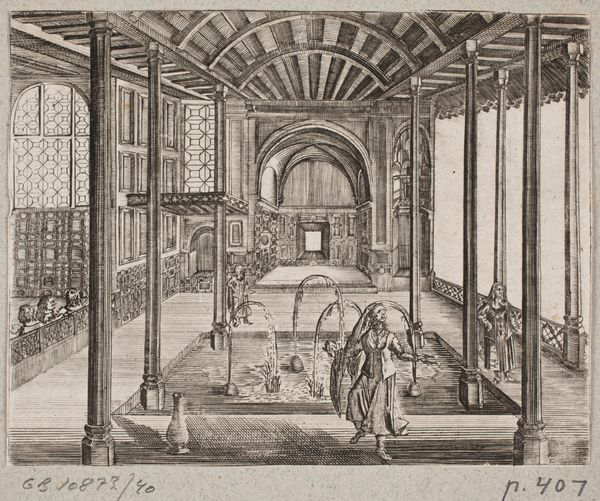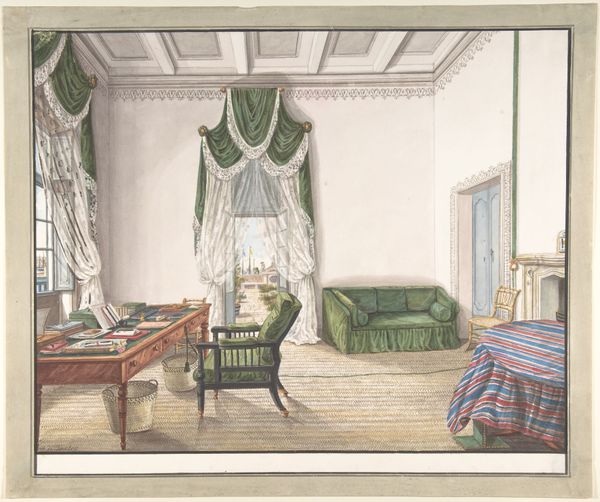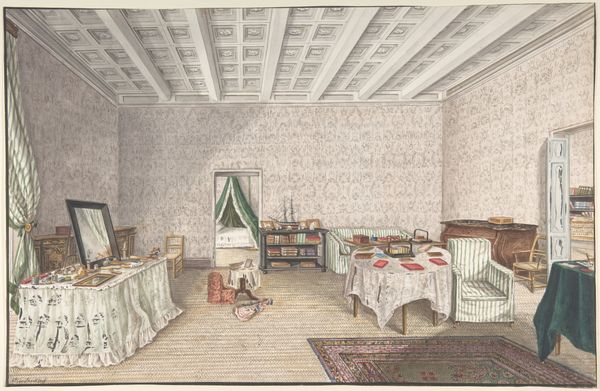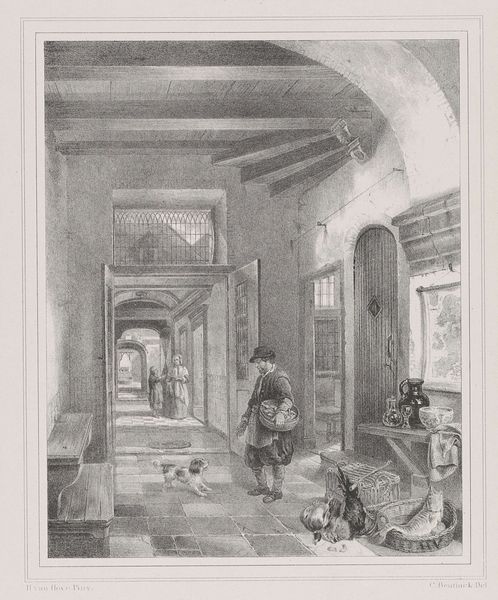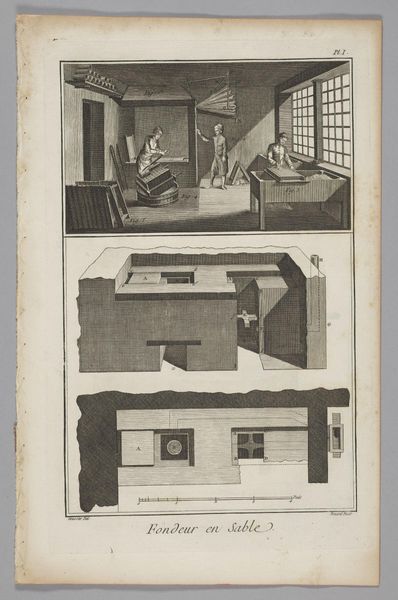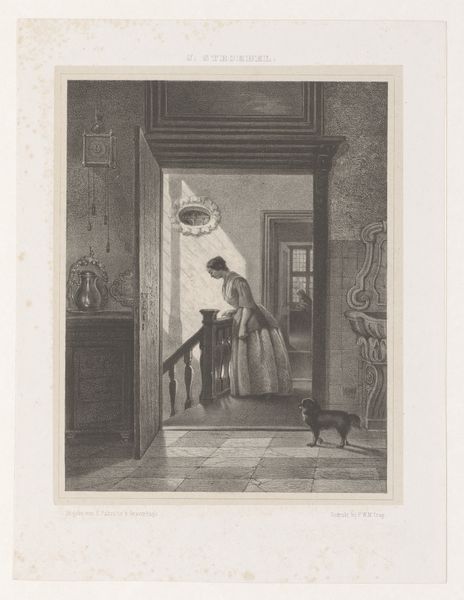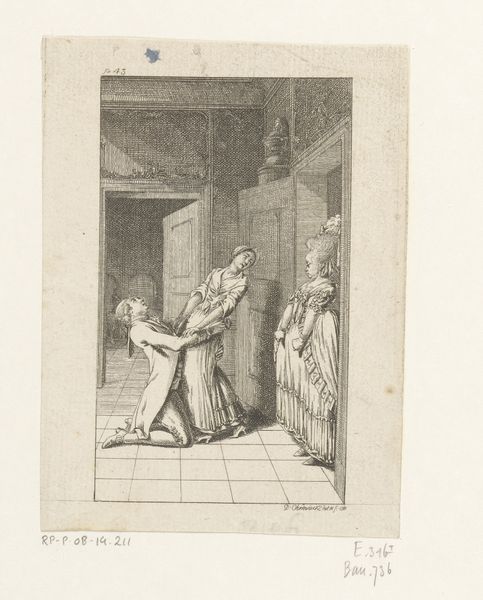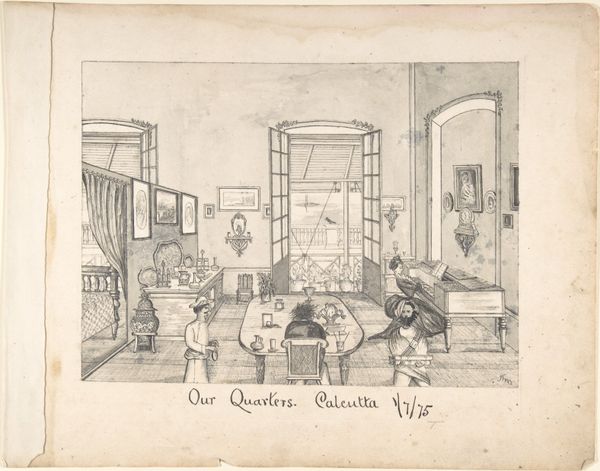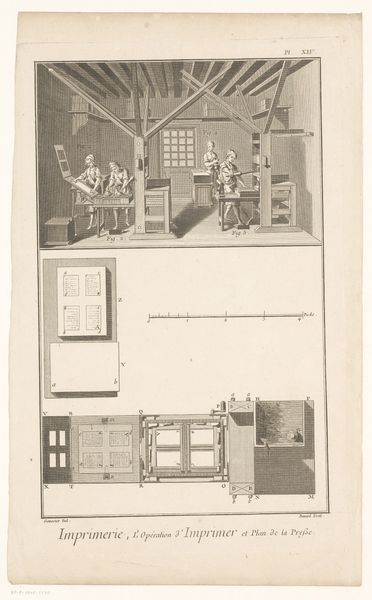
Woonkamer met zoon Jantje en Flora, een tot slaaf gemaakte vrouw, bij een spinnewiel 1784
0:00
0:00
Dimensions: height 195 mm, width 155 mm
Copyright: Rijks Museum: Open Domain
Editor: We are looking at Jan Brandes' watercolor titled "Woonkamer met zoon Jantje en Flora, een tot slaaf gemaakte vrouw, bij een spinnewiel" from 1784. The scene is domestic, yet the composition feels rather…staged, almost theatrical. How do you interpret this work? Curator: Focusing on the formal elements, the artist employs a somewhat rigid structure, doesn't he? Note the orthogonal lines defining the room's architecture, the way the windows frame the outside world like individual paintings. Does this structure affect the emotional tone of the work? Editor: It does seem to create a sense of separation. The people are almost like figures placed within a geometric framework. The cool blues of the window frames and the floor contribute to this slightly detached atmosphere. What can we read from those contrasts? Curator: Precisely! The use of colour here seems less about naturalism and more about a system of symbolic contrast. The muted, desaturated tones might denote a certain social or emotional distance. Think about how the artist contrasts these blues and grays with warmer reds and browns in the foreground elements. This, to me, sets up opposing spaces and narratives, wouldn't you agree? Editor: I hadn't considered the contrasting colours as symbolic. So the warm tones are perhaps suggesting comfort and intimacy? While also underscoring the artificiality of domestic space at the time? Curator: I believe that a semiotic study of this artist's other works may illuminate his artistic language even more. He might utilize different forms and textures that point toward his personal artistic agenda within that broader social frame. Editor: That is very insightful, it shows me how important paying attention to the artist's broader use of formal languages can be for contextualizing the work itself.
Comments
No comments
Be the first to comment and join the conversation on the ultimate creative platform.
